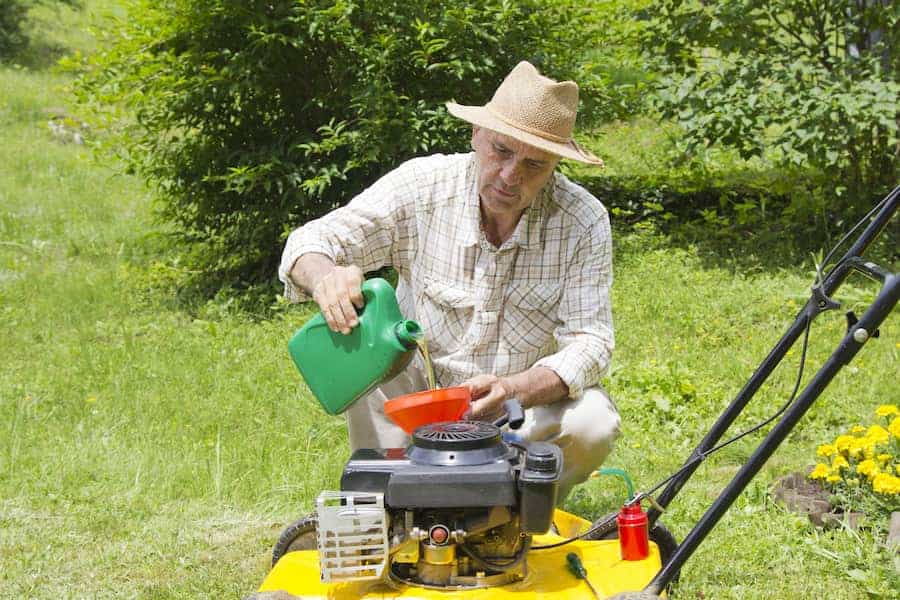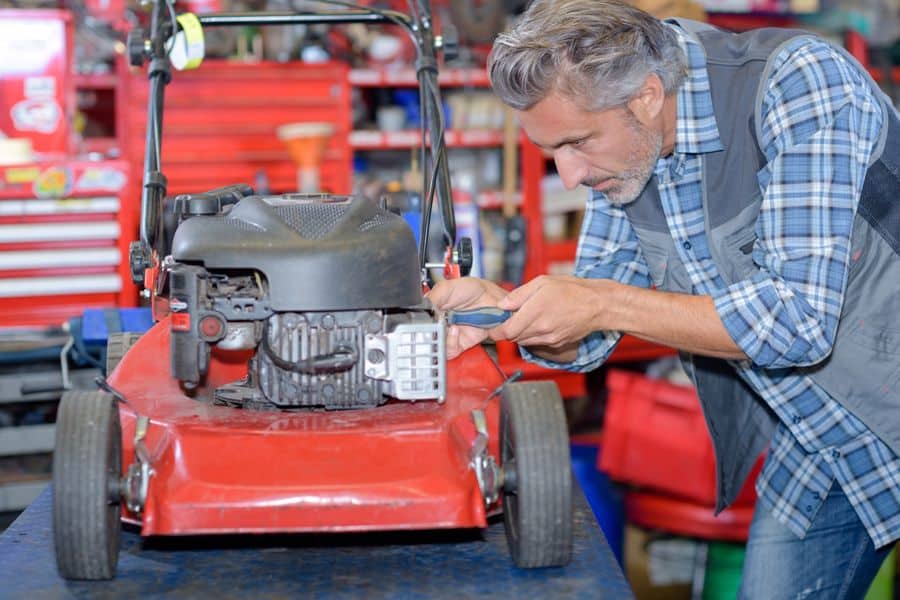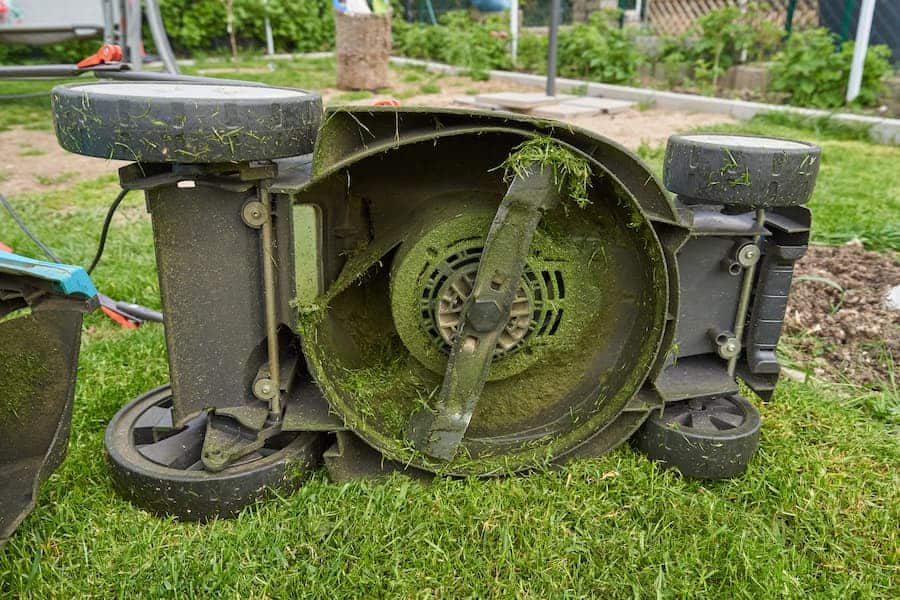There are many reasons your lawn mower might run for only a few seconds before dying out. Check the list below for possible issues that could cause your lawn mower engine to start and then quickly die, and review potential fixes.
Reasons Lawn Mowers Run For a Few Seconds and Then Die
There are four common and easily fixable problems that cause lawnmowers to run for a few seconds and then die. There are also more serious problems that produce the same effect.

These problems tend to occur more often in budget mowers. If you’ve spent under $200 on your lawn mower, then it might be time for an upgrade. Nicer models should last longer.
In addition, make sure you know and understand the process for how to start your gas mower. They are different than starting electric mowers, and then to have more complications.
1. You Need to Clean Your Carburetor
A dirty or clogged carburetor is a classic cause of engines that start, cough, and then die.
Without the right blend of fuel and air, the explosions generated by a combustion engine can be too irregular or too weak to sustain the operation of the lawnmower. The carburetor is responsible for calibrating that blend and controlling how much of each substance enters the engine.
If your carburetor is damaged or defective, it will need to be replaced. Usually, it’s just dirty, and a quick clean will have your mower running again.
Spray-on carburetor cleaners exist and are easy to use, but you’ll have to partially dismantle your lawnmower to get to the carburetor. Another option is to take the mower to a small engine expert.

2. You Need to Replace Old Fuel
One reason your lawnmower might start and die is lack of fuel. This could be due to a nearly empty gas tank, but it could also be caused by impure fuel.
If the gas in your lawn mower has been there for a while, evaporation can change the consistency of the liquid. The gasoline won’t move smoothly through the machine, creating a restricted gas flow and leading to an engine that runs for a few seconds and then dies.
Left unchecked, the buildup can cause clogs or blockages in your engine, which need to be addressed by a professional.
If this is your problem, you can fix it by draining the fuel tank and replacing it with fresh gas. Going forward, you might also consider choosing a stable fuel that does not degrade or adding a fuel stabilizer to the tank.
3. You’ve Used the Improper Fuel Mixture
Most people who read this think it means that you have added the wrong fuel to the mower. While that is a problem, that isn’t the problem we see causing a mower not to stay running.
However, if you have left the choke open too long, then you might have too high of a concentration of fuel. This can happen if you start your mower up but forget to close the choke and start mowing.
Too high of a concentration of fuel floods the combustion chamber, leading to the mower stalling. Usually waiting an hour or so will allow the fuel to drain from the combustion chamber and you can try again.
4. The Spark Plugs Are Dirty or Defective
Air and fuel mix in the cylinder of your mower engine. A piston compresses the mixture, and a small spark ignites an explosion. This process, repeated over and over, produces the power to turn the wheels and spin the blade of your lawnmower.

The spark plug provides that flash of ignition. Without regular sparks, your engine won’t be able to keep running.
The spark plug could be dirty, defective, or dead. To find out which, you’ll need to remove it from the lawn mower. There’s likely a wire on your mower that connects to the spark plug, so disconnecting this wire is the first step.
A socket wrench is usually required to extract the spark plug. A wire brush and some rubbing alcohol will remove most debris. If you give the plug a good scrub and it still looks filthy or there is carbon buildup, it’s better just to buy and install a new spark plug.
5. You’ve Overfilled the Oil Tank
Too little oil has grave consequences, so it makes sense to err on the safe side. But if you overfill the oil tank, your engine won’t run.
When the engine heats up, that oil will start to smoke, producing smoke. As excess oil continues to flood the engine, it will sputter out and die.
Fixing too much oil is a lot easier than dealing with the consequences of underoiling. For a walk-behind mower, grab a clean container and hold it underneath the oil hole. Tip the mower and allow the excess oil to run into the container.

Next time you fill the oil tank, consider using a dipstick to check that it’s full enough without overflowing.
6. You Have a Dirty Air Filter
Many people don’t even realize that lawnmowers have air filters. However, just like your car, your mower typically has an air filter that catches dust, particulates, and debris and prevents them from getting into your engine.
And, just your like car, you need to change out the air filter from time to time. It will get dirty, preventing clean air from entering the engine and causing overheating or just plain poor performance.
The air filter is really easy to inspect – if its dirty to the point where air can’t pass through any longer, its time to change it. You should also change it out every 20-30 hours of use.
So, to make it easy, if you use your lawnmower every weekend from spring to fall, that means you should change the air filter once every year.
Its rare that this is the reason your push mower starts then stops, but it is a good thing to check on.
If none of these recommendations work, you might have an engine that has seized on your mower.
Why Does My Mower Start Then Stop?
Conclusion
There are four common reasons that a lawn mower starts then stops. All four can be fixed by a confident consumer. If you eliminate these causes and the lawn mower starts then dies, it’s probably time to bring in a professional.